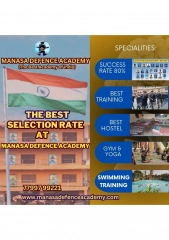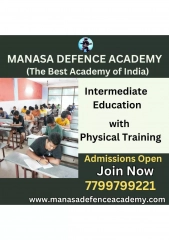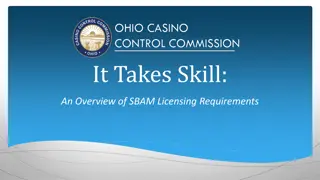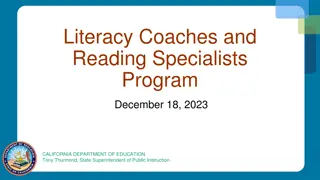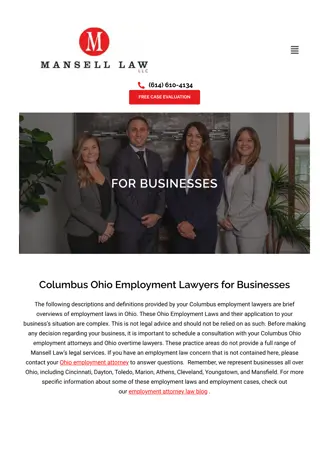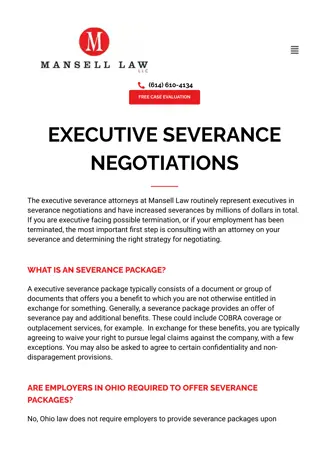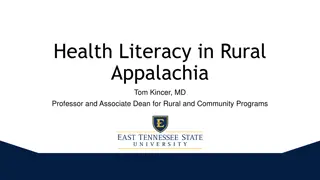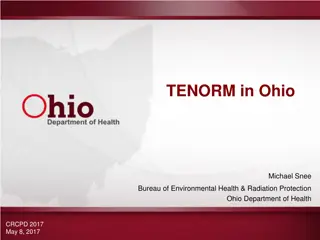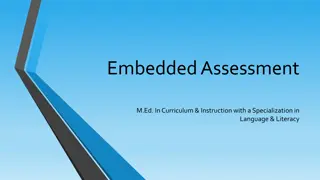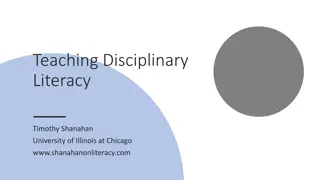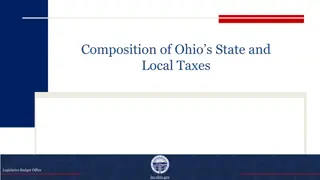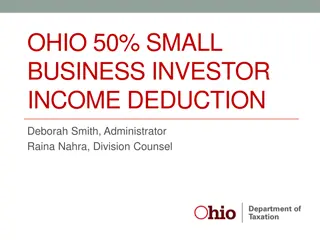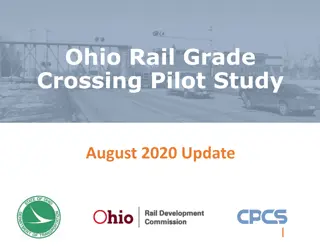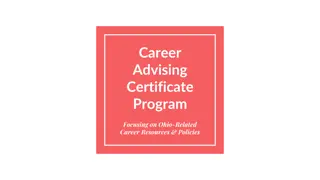
Characteristics of High-Performing Schools and Systemic Change
Explore the nine characteristics of high-performing schools, the role of instructional leaders in leading complex change, the Collaborative Problem-Solving Process, and examples of sustained professional learning plans. Understand the importance of clear and shared vision and purpose in school improvement. Disclaimer: The materials provided do not reflect endorsement by education departments.
Download Presentation

Please find below an Image/Link to download the presentation.
The content on the website is provided AS IS for your information and personal use only. It may not be sold, licensed, or shared on other websites without obtaining consent from the author. If you encounter any issues during the download, it is possible that the publisher has removed the file from their server.
You are allowed to download the files provided on this website for personal or commercial use, subject to the condition that they are used lawfully. All files are the property of their respective owners.
The content on the website is provided AS IS for your information and personal use only. It may not be sold, licensed, or shared on other websites without obtaining consent from the author.
E N D
Presentation Transcript
This presentation contains examples and resource materials that are provided for the user s convenience. The inclusion of any material is not intended to reflect its importance, nor is it intended to endorse any views expressed, or products or services. These materials may contain the views and recommendations of the presenter as well as hypertext links, contact addresses and websites to information created and maintained by other public and private organizations. The opinions expressed in any of these materials do not necessarily reflect the positions or policies of the U.S. Department of Education or Ohio Department of Education and Workforce. The U.S. Department of Education and Ohio Department of Education and Workforce do not control or guarantee the accuracy, relevance, timeliness, or completeness of any outside information included in these materials. Mentions of specific programs or products in these examples are designed to provide clearer understanding and are not meant as endorsements. 3
LEADING SYSTEMIC CHANGE Focus is a Prerequisite for Improvement DARYL MICHEL Ph.D. Educator, Author, Consultant daryl.michel5@gmail.com X: @DarylAMichel LinkedIn: darylamichel 4
SESSION OBJECTIVES Explore nine characteristics of high-performing schools Understand the role(s) of an instructional leader and leading complex change Learn about and know the four-phases of the Collaborative Problem-Solving Process See an example of a sustained professional learning plan that is focused on a priority/focus 5
NINE CHARACTERISTICS OF HIGH-PERFORMING SCHOOLS: FOCUS FOR TODAY S PRESENTATION Clear and Shared Vision and Purpose High Standards and Expectations for All Students Effective Instructional and Administrative Leadership High levels of Teamwork and Staff Collaboration Aligned Curriculum and Instruction with Standards and Assessments Closely Monitored Teaching and Learning Focused Professional Development of High Need Areas Supportive Learning Environment A High Level of Community Involvement Anderson, 2025; Ash, 2021; Goeas, 2017; Knuckles, 2024; Shannon & Bylsma, 2007
CLEAR AND SHARED VISION AND PURPOSE What is your school/district/organization shared vision/focus? Who took part in this decision? What is it based on? How, if at all, has this vision been communicated to all stakeholder groups? How, if at all, does this vision create a consistent direction for all stakeholder groups? While focus alone is not a sufficient strategy for school improvement, focus is a prerequisite for improvement (Reeves, 2011, p. 4). 7
HIGH STANDARDS AND EXPECTATIONS FOR ALL STUDENTS Do all educators and administrators believe that all students can achieve high standards? What is your evidence? What if they don t? Deficit thinking Asset-based approach Appreciative inquiry 8
EFFECTIVE LEADERS ADVOCATE, NURTURE, AND SUSTAIN A Leaders vs. Managers SCHOOL CULTURE AND INSTRUCTIONAL PROGRAM CONDUCIVE TO STUDENT LEARNING AND STAFF PROFESSIONAL GROWTH. Management Leadership Transactional Task oriented: control a group of individuals to achieve goals Instruct people Cognitive intelligence Planning and organizing resources to manage tasks and deliver results Status quo Transformational People oriented: influence and motivate others to contribute to the organization's success Listen and empower build capacity in others Emotional intelligence Lead change through innovation Disrupt status quo
HIGH LEVELS OF TEAMWORK AND STAFF COLLABORATION One way to plan for sustained learning is through a professional learning community (PLC). The concept of a PLC has been around for decades (Hord, 1997; Leithwood, Leonard, & Sharratt, 1997) and, more recently, Hattie (2023) said: A PLC needs to relate to the evidence of impact on the students from professional learning .they are more effective when problematic beliefs are challenged, when there is testing of the efficacy of competing ideas, when high expectations for all are developed, and when discussions are grounded in artifacts representing growth and challenges in student learning. (p. 235) 10
HIGH LEVELS OF TEAMWORK AND STAFF COLLABORATION A PLC is a larger organization and not the individual teams that comprise it. While collaborative teams are an essential part of the PLC process, the sum is greater than the individual parts .we believe it is helpful to think of the school or district as the PLC and the various collaborative teams as the building blocks of the PLC .The PLC process is much more than a meeting .the process requires people to act on the new information. DuFour et al., 2016, p. 10 11
ALIGNED CURRICULUM AND INSTRUCTION WITH STANDARDS AND ASSESSMENTS Evidence-based curriculum and instructional practices Are curriculum and instructional practices evidence-based? Are curriculum and instructional practices aligned to enhance student learning? Evidence-based assessments Be evidence-informed, not numbed by the numbers. Decide what you need and use it judiciously. (Hargreaves & Fullan, 2012) 12
CLOSELY MONITORED TEACHING AND LEARNING Who monitors teaching (e.g., certified and non-certified staff)? What are their qualifications (e.g., took part in the professional development, certified evaluators)? Principals who spend additional time coaching teachers and/or help to develop the educational program see greater achievement in student scores. Time on classroom observations [walkthroughs] is more negatively associated with student achievement gains when not used for professional development. Grissom, Loeb, & Master, 2013, p. 438 13
FOCUSED PROFESSIONAL DEVELOPMENT OF HIGH NEED AREAS PROFESSIONAL LEARNING PROFESSIONAL DEVELOPMENT Online webinar College/university course Conference session Specialized training Formal education Reading and discussing professional literature Analyzing data with colleagues Collaboratively Planning Curriculum Hargreaves & O Connor, 2018b, Boston Consulting Group Study, 2014
A one-day professional development session rarely results in sustained improvement. Joyce & Calhoun, 2010; Hasbrouck & Michel, 2022 Learning about and implementing a new skill or strategy requires (Joyce and Showers, 1982): 20-30 hours of additional study about the skill or strategy, 15-20 demonstrations or more to observe the skill or strategy being taught with diverse learner populations, and 10-15 times to practice the new skill or strategy with colleagues or small groups. Element Effects on knowledge Effects on short- term use 5%-10% Effects on long-term use 5%-10% Study of rationale Very positive Rationale plus demonstratio ns Rational plus demonstratio ns and planning Above elements and peer coaching Very positive 5%-20% 5%-10% Very positive 80%-90% 5%-10% Very positive 90%+ 90%+ Joyce and Calhoun (2010)
Even if teachers have both thewhyand thewhat, a radical shift in practice can be challenging. Many teachers will also need the how:ongoing support in adapting a curriculum to the needs of their students and delivering it effectively, from someone who understands it well [not necessarily an instructional coach or coaching dosage]. Wexler, 2023 16
GUSKEY'S MODEL OF TEACHER CHANGE, 2002, p. 383 Change in teachers beliefs and attitudes Change in teachers classroom practices Change in student learning outcomes Professional Development
Individuals have developed a high level of competence and can perform the skill and apply the knowledge without concentrating. They can perform it with automaticity. Individuals are aware of their lack of knowledge or skill for a specific area. Individuals aren t aware of their lack of knowledge or skill level Individuals have developed the knowledge and for a specific skill. skills, but they need to concentrate to perform them. Adams, 2011
SUPPORTIVE LEARNING ENVIRONMENT Positive Experiences Negative Experiences Which items from your two lists are evident in your daily work? 19
A HIGH LEVEL OF COMMUNITY INVOLVEMENT In what way(s), if at all, are all stakeholder groups involved in decision-making? How, if at all, are all stakeholder groups involved in learning (e.g., your focus)? 20
THE COLLABORATIVE PROBLEM-SOLVING PROCESS: A WAY TO CONNECT WITH THE CHARACTERISTICS Hasbrouck & Michel, 2022 21
FOCUS: GENERAL ACADEMIC VOCABULARY Set standards and expectations Stay focused on learning and professional growth; build capacity in others Determine how PLCs could be ongoing learning opportunities Spend time analyzing the alignment between/among curriculum, instruction, and/or assessment Monitor teaching and learning and provide feedback Schedule sustained professional learning for all stakeholder groups 22
FOCUS: GENERAL ACADEMIC VOCABULARY Learn together Expressive and Receptive Vocabulary General-academic (e.g., analyze) versus Content-specific Vocabulary (e.g., igneous) Word features (e.g., semantic meaning, phonological pronunciation, or orthographic spelling) Words to Teach (Tier 1, Tier 2, Tier 3) Explicit Vocabulary Instruction/Routine Vocabulary Connections to Comprehension and Writing 23
CHANGE IS OFTEN COMPLEX! COMPLICATED COMPLEX Tend to be technical in nature and can be solved through processes, procedures, and systems in a step-by-step way. Can t be solved through computation because there are too many variables and interrelated factors that cannot be represented through rules or processes. Not predictable and require innovative responses Transforming education requires a new focus on collective leadership that empowers educators to lead complex change. -Michel & Brookhart, In press
QUESTIONS? education.ohio.gov/LiteracyAcademy
QUESTIONS? EDUCATION.OHIO.GOV

